Charity’s Push to Get Women Donors More Actively Involved Yields Big Gifts

THE CHRONICLE OF PHILANTHROPY
Pam Scott spent years as a top marketing consultant and brand strategist helping companies like Nike connect with customers. Yet in philanthropy circles, where she was a generous donor, no one seemed interested in her skills. Often she felt like a walking checkbook. Or a third wheel as nonprofits courted her husband, founding Yahoo CEO Tim Koogle.
“There is kind of nothing like marrying a wealthy man to reduce people’s expectations of what you are capable of,” Ms. Scott says.
Today, however, Ms. Scott is in the trenches with an international nonprofits fighting to reduce teenage pregnancy in Tanzania. Zipping back and forth from her California home to Africa, she is pouring herself into a program built in part on her ideas from the corporate world. Mr. Koogle is involved, too, but Ms. Scott is out front, leading the way.
How Ms. Scott moved from overlooked spouse to frontline health worker is a story rooted in a new venture to tap women’s talents as well as their wallets. She and 13 others have come together as the founding philanthropists of the Maverick Collective, a cadre of women who bankroll nonprofit’s work, help execute projects, and advocate for causes. Together they have pledged $19.8 million to fund global projects to improve the lives of women and girls.
Maverick is the creation of Population Services International, a nonprofit that has long applied business principles to health problems in the developing world. Co-chaired by Melinda Gates and the crown princess of Norway, the collective is designed to confront a problem articulated by female donors and documented by research: Women want to do more than scribble checks, yet few organizations give them a shot. Maverick, Ms. Gates says, offers lessons for other women’s giving efforts as well as nonprofit-donor relationships generally.
“Don’t get me wrong. Money matters, too,” Ms. Gates said in an email. “But when donors are engaged deeply, it helps grow a strong bond of commitment and loyalty that can have an impact that lasts a lot longer than a single financial pledge.”
‘Invest in Women’
Kate Roberts, a longtime executive at Population Services, helped conceive Maverick and bring it to life. She’s a veteran of health-awareness campaigns and numerous partnerships with celebrities. A few years ago, she began to envision a philanthropy effort tailored to high-net- worth women.
That seed of an idea was in the back of her mind when she was introduced to Bill Gates in 2011 by a fellow member of the World Economic Forum’s Forum of Young Global Leaders. Over dinner in Washington, they talked about the success of the Giving Pledge and other ways to spark philanthropy. Ms. Roberts, heavily pregnant with her daughter, asked the billionaire how specifically to expand global advocacy focused on women and girls and push through development goals set by the United Nations.
Mr. Gates immediately suggested investing in women and young heirs to wealth. And he proposed they talk to Ms. Gates.
Conversations with the crown princess of Norway, Mette-Marit, whom Ms. Roberts got to know through the Forum of Young Global Leaders, and conversations with Ms. Gates followed. The two agreed to serve as co-chairs. The Bill & Melinda Gates Foundation made a five-year, $5 million grant to Population Services to cover staff and other costs.
Marshall Stowell, vice president of external relations and communications at Population Services, worked to put a strategy in place. And Ms. Roberts and the princess hunted for donors who could make a minimum $1 million, three-year commitment.
They spoke at small conferences for high-net-worth women and in private homes. What are your goals?, Ms. Roberts asked each potential Maverick member. Where do you see yourself in three years? How would you use your experience with Maverick to inspire others? The ideal candidates: smart, skilled, connected women ready to roll up their shirt sleeves.
Members describe similar reactions to their recruitment — skepticism, followed by curiosity and excitement. Kathryn Vizas, a former corporate lawyer who lives in Berkeley, Calif., recalls Ms. Roberts and the crown princess peppering her with questions.
She had seen organizations “promise the sun and the moon in order to get a donor” and fail to deliver. But Ms. Vizas also felt underutilized by the charity boards she had joined: She didn’t go to law school to hang gala decorations, she sometimes joked. Maverick, she decided, offered something different. By late 2013, she was on board. “I can’t give a gazillion dollars, but I can do something,” Ms. Vizas says. “This was a way for me to do something and to learn about a world I’m very interested in.”
Warts and All
Once donors commit, Population Services invites them to support and work on one of several vetted, high-potential pilots too small for major grant makers or governments to get behind. So far, Maverick donors have pledged to help build a health clinic in Nicaragua to delay second pregnancies among teenage girls, create better access to midwives in Senegal to reduce the number of women dying during childbirth, and develop interventions to reduce gender-based violence in India.
Stasia Obremskey, a management consultant with degrees from the University of Notre Dame and Harvard Business School, committed to support a project in Mozambique to create a market for an injectable contraceptive — a natural fi with her giving to pregnancy prevention in the United States. Ms. Obremskey and her high-school-age daughter have been part of nearly all the project planning and expect to make their first trip to Mozambique in November.
Drawing from her professional background, Ms. Obremskey created a risk matrix to identify potential problems and their impact and figure out how to mitigate them. It quickly proved its worth: She and Population Services staff correctly anticipated that securing government approval in Mozambique could be an early stumbling block, something that stymied work for several months but that has now been resolved. And the matrix is being used for other projects.
Though many nonprofits might be afraid to let donors see their missteps, part of Maverick’s draw, according to those involved, is the chance to get under the hood and help fix things.
“I might see some warts, and I might see what it is really like in the field trying to get these projects done, but that is OK,” Ms. Obremskey says.
Grooming Advocates
Ms. Vizas, the one-time corporate lawyer, is in the third and final year of her project to expand the use of low-cost screenings for cervical cancer in Uttar Pradesh, India’s most populous states. The daughter of an oncologist, she saw it as a way to have a huge impact with a relatively modest amount of money. Ms. Vizas has traveled to India twice and will make two more trips in 2016. She has seen unexpected setbacks and missteps. A doctor with a lead role in the project left. The team failed to recognize the need to market the screenings directly to women to increase the number of walk-in clients, Ms. Vizas says.
But successes have included partnerships with a major Indian medical association and a big public teaching hospital. The project has resulted in the screening of 54,000 women and has a goal of screening tens of thousands more by the end of the year. The work has launched her into a career in public health, which she loves, Ms. Vizas says.
Ms. Vizas and Population Services are now focused on attracting more donor dollars and government support to scale up the project in India and perhaps beyond. “I certainly have not become a physician, but it is not impossible to learn the basic things that one needs to know in order to talk about a project in a compelling way,” she says.
Such advocacy is another way Maverick seeks to maximize the skills and networks of members. Population Services provides them with training to do media interviews and write opinion pieces. Members have spoken at conferences such as the Women Moving Millions and Nexus USA Youth summits. Last year, Maverick member Indrani Goradia, whose project aims to reduce gender-based violence, spoke at the United Nations and gave a TEDx talk.
“I want to find the talent in each of these women and develop a program that works for them to be the best they can possibly be to have impact around the world,” Ms. Roberts says. “Not everybody is going to be the person standing up at a conference. But the person who is not standing up at a conference is perhaps a genius in finance or a genius in marketing and can help us in some way.”
Full-Time Job
For her part, Ms. Scott says she has made her Maverick project into a full-time job. She has traveled four times to Tanzania, twice in March alone.
Her key work: integrating her expertise in something called human-centered design into the teen-pregnancy project. At its simplest, this approach asserts that the design of whatever you’re producing — whether a sneaker or a nonprofit program — should be driven by those who will use it. In the corporate world, human-centered design involves immersion with customers to understand their lives and how they might use a product. Prototypes are tested with continuous feedback from potential buyers.
In Tanzania, Ms. Scott and the project team are putting this approach to use to design products and services that will reduce unwanted pregnancies. Staff members have traveled extensively for conversations with teenage girls, parents, teachers, boyfriends, medical professionals, and village leaders. A chief goal: identify the cultural norms that lie behind the country’s high teen birth rate, five times that of the United States, according World Bank data.
In their conversations with Tanzanians, the team explored such questions as: Why are health workers resistant to giving contraceptives to adolescents? What culturally appropriate marketing might be effective with teens? Armed with answers, the group came up with a variety of ways to address the cultural and practical issues they uncovered, then took them back to Tanzanians for feedback.
One discovery: Girls were exchanging sexual favors for rides from motorcycle taxi drivers. As an answer, both the team and Tanzanians saw value in a fleet owned and operated by women.
Population Services quickly had a female-driven test bajaj, as the taxis are called in Tanzania, out on the streets of Dar es Salaam.
Sharing Experiences
Seven full-time Population Services employees work on the Maverick Collective, including three relationship managers, according to Ms. Roberts. The Gates Foundation grant covers most of their salaries. More staff are involved at various stages of the projects.
Included in donors’ minimum $1 million donation is a 15 percent fee to cover overhead costs. Ms. Roberts says Population Services is committed to sustaining Maverick and is looking for additional funding partners beyond the Gates Foundation grant.
The nonprofit aims to add 10 new Maverick members this year. Some men have expressed an interest, and Population Services is considering taking them on.
It could take years to assess the long-term impact of the Maverick Collective on its members and the nonprofit world, Ms. Gates said.
“One trend I do believe we’ll see is more women coming together to learn from each other and to share experiences with one another,” she said in an email.
Ms. Scott travels back to Tanzania in June. She enthusiastically recommends the Maverick experience. “It has exceeded my expectations by about 1,000 percent,” she says.
She and other Maverick members say more philanthropists need to be elevating health issues for women and girls. Ms. Scott fears that some wealthy people see the work of Bill and Melinda Gates and assume the world’s problems are being addressed.
“Melinda can’t do this on her own,” Ms. Scott says. “That woman is doing a tremendous amount of heavy lifting, but there is so much more to lift.”
